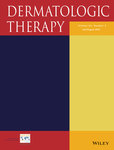Itch reduction using immersive virtual reality—An experimental pilot study
Abstract
In a previous proof-of-concept study we have demonstrated that visual exposure to specific colors results in pruritic or antipruritic effects. To determine the effect of “antipruritic” colors when using immersive virtual reality (VR) and to assess whether psychometric values correlate with the response to the color exposure. In this cross-sectional interventional single-center study, itch patients were exposed to their subjective “antipruritic color” (defined by the Manchester Color Wheel) in a virtual monochromatic room for 10 min using a head-mounted display. Itch intensity rating (0–10 numerical rating scale [NRS]) was repeated at 1-min intervals. Additionally, dermatology life quality index, itch-related quality of life and the Hospital Anxiety and Depression Scale questionnaires were completed. Twenty-two patients (mean age 51.9 ± 23 years, 13 females) participated in the study. Following color exposure for 10 min itch intensity was significantly reduced compared to baseline (exact Wilcoxon signed-rank test, mdn-NRS 4.5 vs 3.0; z = −3.025, p = 0.001), confirmed by the area under the curve (z = −3.118; p = 0.001). No significant correlation between itch reduction and questionnaire scores was found (Spearman's Rho for all questionnaires). Visual exposure to the “antipruritic color” using immersive VR resulted in a significant decrease in itch intensity. This aligns with previous findings on the influence of colors on itch perception. The response of the intervention appeared independent of psychometric values. Thus, color exposure using immersive VR is a promising, low-cost, rapidly-acting, easily-applicable, non-pharmacological experimental antipruritic method.
CONFLICT OF INTEREST
The authors declare no conflicts of interest.
Open Research
DATA AVAILABILITY STATEMENT
Research data are not shared.




